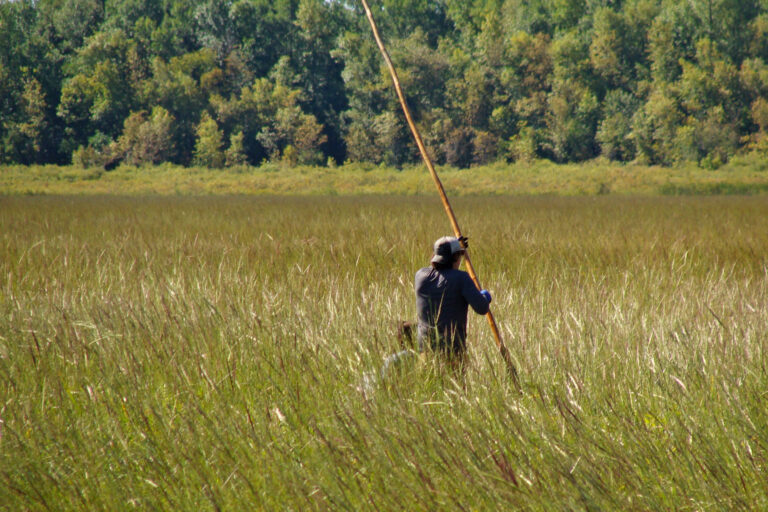- Wild rice or manoomin is an ecologically important and culturally revered wetland species native to the Great Lakes region of the United States and Canada, which once covered thousands of acres and was a staple for Indigenous peoples.
- Over the past two centuries, indiscriminate logging, dam building, mining, and industrial pollution have decimated the wild rice beds, and today climate change and irregular weather patterns threaten the species’ future.
- In recent years, native tribes and First Nations, working with federal and state agencies, scientists and funding initiatives, have led wild rice restoration programs that have successfully revived the species in parts of the region and paved the way for education and outreach.
- Experts say more research and investments must be directed towards wild rice, and such initiatives need the support of all stakeholders to bring back the plant.
In the late summer of 2023, thick stands of wild rice stood tall and shimmered gold in some of Lac du Flambeau’s lakes. The plant has been virtually absent in these lakes for decades, so for Joe Graveen, the sight of grain-filled stalks was a thing of joy, he says. As the wild rice program manager for the Lac du Flambeau Band of Lake Superior Chippewa Indians, a tribal band in northern Wisconsin, Graveen was seeing the fruits (or grains, literally) of hard work he and his tribe’s members had put in over the past six years.
“It was the first time that I think a lot of us saw wild rice in a while, in about 20 years or maybe longer,” Graveen says. “It always brings a smile to my face to see our harvesters’ reaction.”
The wild rice only grew here after years of grit and endurance. In late 2017, the band launched a new program to revive wild rice in some of the 260 lakes on their reservation. Leading the program is Graveen, a “ricer” and knowledge keeper who learned about the plant and harvesting methods from his elders. The restoration involved seeding the lakebeds with tons of rice seeds, monitoring water quality, fending off geese from gobbling the young rice plants, and keeping tabs on the lakes’ water levels.


